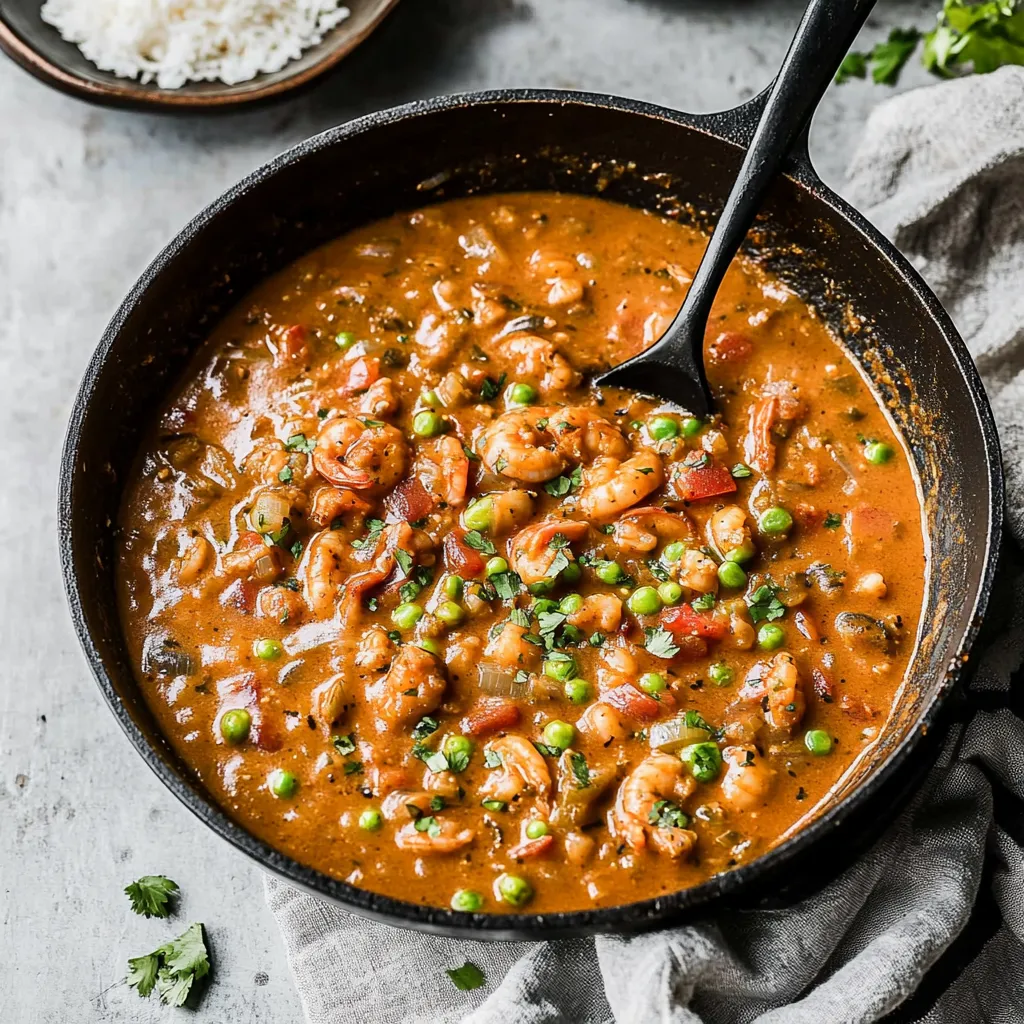 Pin it
Pin it
Louisiana crawfish étouffée stands as a testament to Cajun cooking mastery. This cherished dish combines succulent crawfish tails with a golden roux-based sauce, creating layers of rich, buttery flavor in every bite.
The secret to exceptional étouffée lies in developing a proper roux and letting the flavors meld slowly. The sauce should coat each crawfish tail perfectly while complementing the bed of rice beneath.
Key Ingredients
- Louisiana Crawfish: Fresh or frozen tail meat, carefully cleaned and peeled
- Unsalted Butter: Premium quality for building the roux base
- Trinity Base: Equal parts diced onion, celery, and green bell pepper
- Stock: Rich seafood stock, preferably homemade
- Seasonings: Garlic, paprika, thyme, and cayenne
- Flour: All-purpose for the roux foundation
Essential Preparation Steps
- Vegetable Base:
- Dice trinity vegetables uniformly for consistent cooking. Sauté in butter until softened and aromatic, creating the dish's foundation.
- Making the Roux:
- Cook butter and flour together, stirring constantly until golden brown. This step requires patience and attention to achieve the right color and nutty aroma.
- Building the Sauce:
- Gradually incorporate warm stock into the roux, maintaining a smooth consistency. The sauce should thicken naturally while remaining pourable.
- Finishing:
- Add crawfish tails at the end, letting them warm through gently in the sauce while retaining their delicate texture.
 Pin it
Pin it
The essence of étouffée lies in its careful preparation and respect for traditional techniques passed down through generations.
Timing Guidelines
Watch the sauce consistency as it develops. It should gracefully coat a spoon while remaining fluid enough to spread over rice.
Presentation
Ladle over hot rice, allowing the sauce to settle naturally. Finish with chopped parsley and green onions for traditional garnish.
Customization Options
Adjust seasoning levels to taste, considering traditional additions like filé powder or extra spice for heat preference.
Storage Guidelines
Store properly cooled leftovers in airtight containers. Flavors develop further overnight for an even richer taste profile.
 Pin it
Pin it
This classic Cajun dish represents the perfect balance of technique and tradition, creating a memorable meal that honors its Louisiana roots.
Frequently Asked Questions
- → Which crawfish is best to use?
- Go with Louisiana crawfish tails for the best taste. Skip imported varieties and check for the 'Louisiana' label.
- → Can I swap seafood stock for something else?
- You can! Chicken or vegetable stock works too, but seafood stock gives the most authentic taste.
- → How dark should my roux get?
- Go for a color close to peanut butter. Cook slowly to avoid burning it while deepening the flavor.
- → Can I prepare it in advance?
- Yep, you can! Reheat it when ready to serve, and it also freezes great for about three months.
- → What’s the difference between Cajun and Creole versions?
- Creole étouffée uses tomatoes for a slightly different flavor, while Cajun versions skip them for a richer base.
